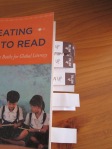![]() Be inquisitive. Be informed. Be interested. There’s plenty of data to collect about collections and customers that can support & implement changes you want to make in your library. Find a problem. Collect the data. Find a solution.
Be inquisitive. Be informed. Be interested. There’s plenty of data to collect about collections and customers that can support & implement changes you want to make in your library. Find a problem. Collect the data. Find a solution.
Staff may say “we’re just *so* darn busy on [day] at [time]”. Collect the data to show when your physical collection is borrowed/returned the most. Is it Monday morning or Thursday night or Sunday afternoon? Find out.
What if … you adjust your staffing roster to match?
Map your active customer base against the demographics of your wider community. Find out who is not using your service. Is it 2nd year students, water quality researchers, family law practitioners, grandparents?
What if … you specifically allocated staffing & resources to find out how to improve services & collections for your most inactive community group? Either way, you’ll find out if they actually don’t need your services, rather than just being poorly served by existing ones.
Find out how much of your digital collection was never accessed in the last 12 months.
What if … you actively promoted all of the material that under-utilised, and then removed or replaced anything that still wasn’t accessed within 6 months.
Talk to your top 5% of customers about what they love and hate about your library. Ask your regular customers what they actually wanted staff to help them with.
What if … you made changes as a result and also reallocated staffing to match customer feedback?
Allocate all staff 5% of their work time to explore, use & learn about new digital resources.
What if … you asked staff to actively promote the best practice/cool features to your customers and then you measured actual usage by customers over a 3 month period?




